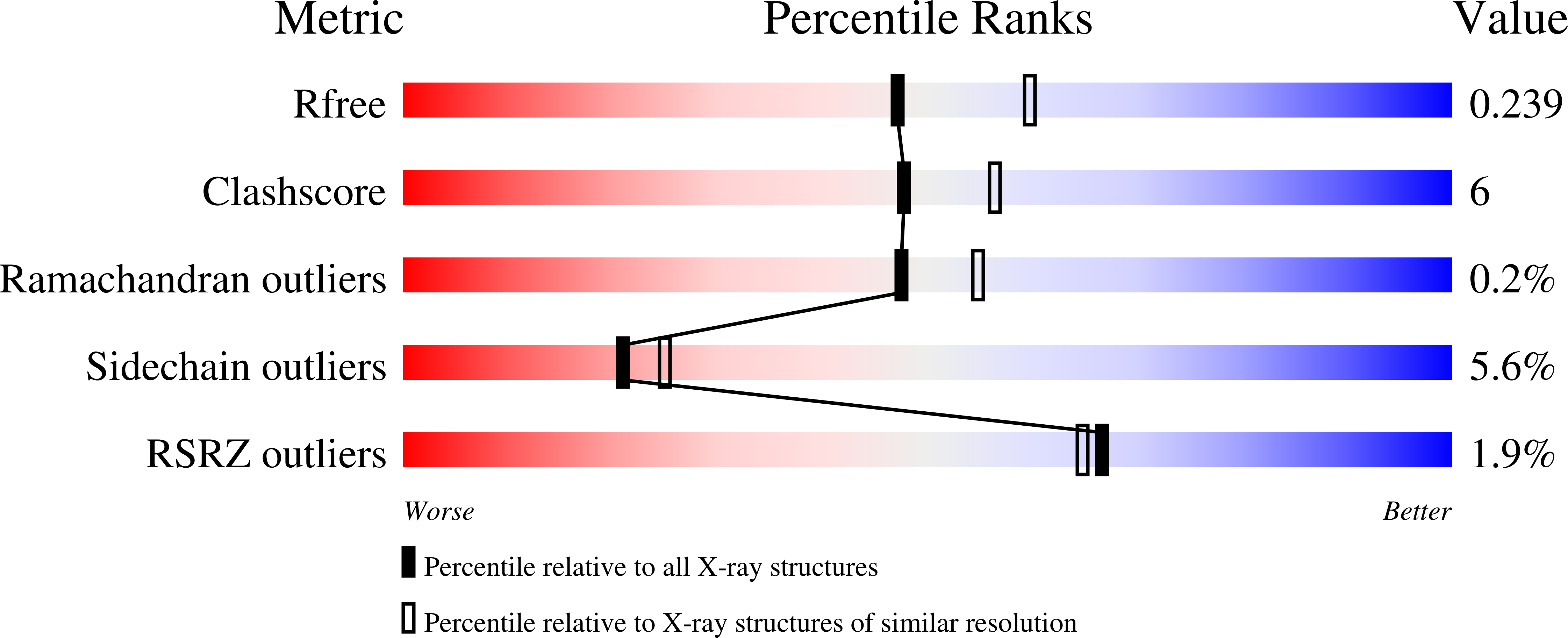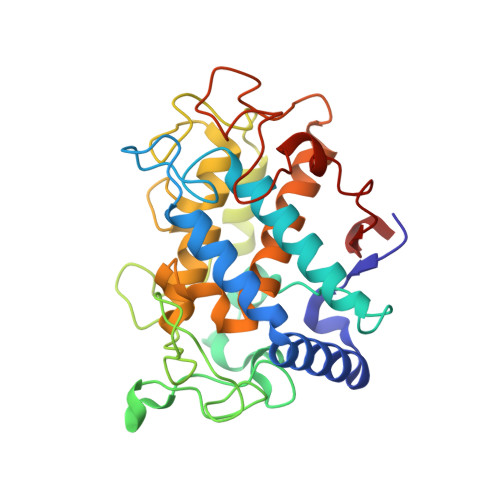Determination of tyrosinase substrate-binding modes reveals mechanistic differences between type-3 copper proteins.
Goldfeder, M., Kanteev, M., Isaschar-Ovdat, S., Adir, N., Fishman, A.(2014) Nat Commun 5: 4505-4505
- PubMed: 25074014
- DOI: https://doi.org/10.1038/ncomms5505
- Primary Citation of Related Structures:
4P6R, 4P6S, 4P6T - PubMed Abstract:
Tyrosinase is responsible for the two initial enzymatic steps in the conversion of tyrosine to melanin. Many tyrosinase mutations are the leading cause of albinism in humans, and it is a prominent biotechnology and pharmaceutical industry target. Here we present crystal structures that show that both monophenol hydroxylation and diphenol oxidation occur at the same site. It is suggested that concurrent presence of a phenylalanine above the active site and a restricting thioether bond on the histidine coordinating CuA prevent hydroxylation of monophenols by catechol oxidases. Furthermore, a conserved water molecule activated by E195 and N205 is proposed to mediate deprotonation of the monophenol at the active site. Overall, the structures reveal precise steps in the enzymatic catalytic cycle as well as differences between tyrosinases and other type-3 copper enzymes.
Organizational Affiliation:
1] Department of Biotechnology and Food Engineering, Technion-Israel Institute of Technology, Haifa 32000, Israel [2].
















